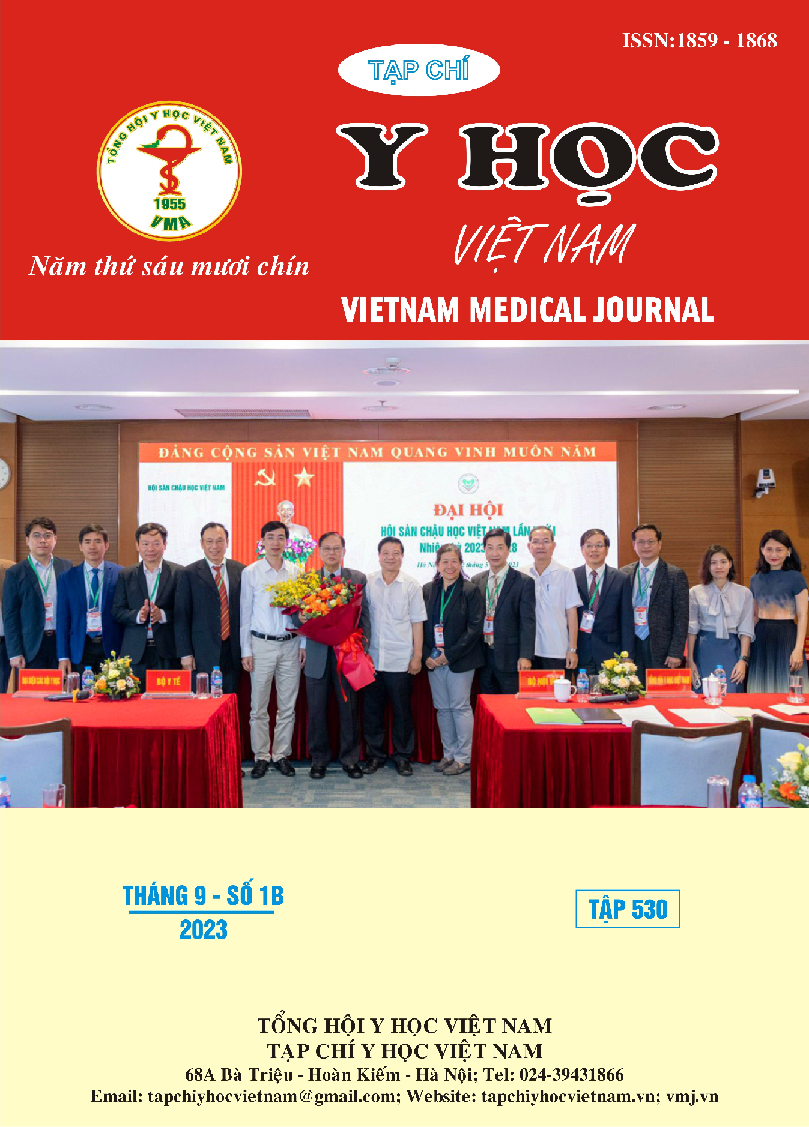DESCRIPTION OF THE CURRENT RESULTS OF FLUVOXAMIN TREATMENT IN GENERALIZED ANXIETY DISORDER PATIENTS
Main Article Content
Abstract
Objectives: To describe the current status of fluvoxamine treatment results in inpatients with generalized anxiety disorder (GAD) at the Institute of Mental Health. Subjects and research methods: conducting a study in 62 patients with GAD according to the ICD -10 criteria, inpatient treatment at the Institute of Mental Health. Research methods: Across sectional study, SF-36 test, CGI scale. Results: The highest dose of Fluvoxamine was 400mg/day, the lowest was 100mg/day. The most common side effect is dry mouth (accounting for 29.03%), the second is constipation and sweating. None of the patients reported side effects such as weight change and suicidal ideation. During the course of treatment, most of the patients received other drugs (66.13%), only 1.61% of the subjects switched drugs. The most common pattern of drug combinations was between fluvoxamine and benzodiazepine (88.71%), second was fluvoxamine and quetiapine (59.68%) and third was the combination of fluvoxamine and sulpiride (29.03%). Conclusion: Using Fluvoxamine to treat GAD inpatient is often used with a high dose of 400mg/day, with few side effects, acceptable side effects are dry mouth, constipation and tremor. The most common is the combination of fluvoxamine and tranquilizers (BZD), antipsychotic (Quetiapine, Sulpirid) to achieve symptom remission and improve patients' quality of life scores.
Article Details
Keywords
Generalized anxiety, drugs, Fluvoxamine, SF-36, CGI
References
2. Figgitt D.P., McClellan (2000). Fluvoxamine an Updated Review of its Use in the Management of Adults with Anxiety Disorders. Adis drug Evaluation. 60(4): 925-954
3. Munir S., Takov V. (2022). Generalized Anxiety Disorder. StatPearls,128 -130
4. Revicki DA et al. (2008), Health-related quality of life and utilities in primary-care patients with generalized anxiety disorder. Qual Life Res Int J Qual Life Asp Treat Care Rehabil. 17(10):1285-1294.
5. Nguyễn Thị Phước Bình (2010), Nghiên cứu đặc điểm lâm sang và điều trị rối loạn lo âu lan tỏa. Luận văn tốt nghiệp Bác sỹ Chuyên khoa II - trường Đại học Y Hà Nội.
6. Carter Robin M et al. (2001), One – year prevalence of subthreshold and threshold DSM – IV Generalized anxiety disorder in a nationally representative sample. Depression and Anxiety. 17: 78- 88.


